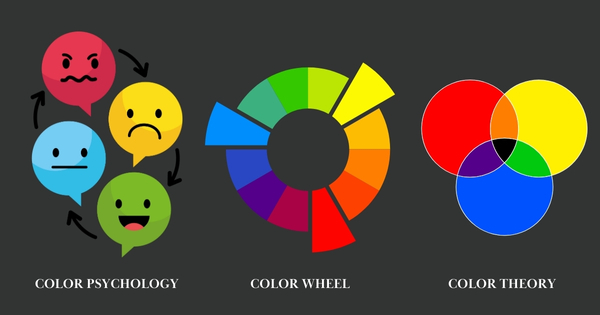Introduction
Graphic design tips are a must for every beginner, you will find a few in this blog. Graphic designing is a creative field where you can express your creativity and ideas using technology. For the designers who just started it’s exciting and thrilling but also overwhelming to find out so many resources at once and figuring out which one is better.
What tools to use?
Which colour combination looks better?
What grid layout is suitable?
In this blog about beginner design guide, we will explore a few tips to keep in mind to create a visually appealing design, while avoiding beginner mistakes.
Table of Contents
1. Use the right tools:
To start with use software tools like Adobe, GIMP or the free alternatives like Canva and Figma. These software tools are beginner friendly and easy to use making it smooth for the beginners to understand.
2. Understand the basics:
Understand the basic designing principles like alignment, balance, emphasis, white space, visual hierarchy, etc. Using software tools becomes easier once you understand the basics.

3.Colour theory:
Using the right colour palette is crucial. Colours represent your brand, thoughts and what you want your audience to perceive about you. Check which colour combination works the best for you. Colour theory, Colour psychology, Colour wheel can help you understand about the different colours and emotions they evoke.

4. Use grid layouts:
What will you choose?
A cluttered wardrobe or an organised wardrobe?
Organised, right? So you can easily find your stuff and get what you want quickly.
So is the case with your profile!

A visually appealing page attracts the user, and helps them navigate through your page/profile easily. Grid layouts can help you organise and make your profile look appealing. There are so many grid layouts to choose from… row format, column format, puzzled etc.
5.Typography basics:
From Sans serif to Serif, there are so many font options to choose from. Learn the typography basics to understand when to use which font. Keep it simple, use only 2-3 fonts everywhere and be consistent. Too many fonts will end up making your design look cluttered. Use font that is easy to read and understand. Apart from the type of font, the size of font also matters a lot. Bold and bigger sizes should be used for important things and topics. Whereas small texts for the body and other information.
6 . High quality images:
Using high quality images enhances the overall look of your designs and also makes your design look professional and premium. Use free stock images websites like freepik, pngtree etc to get high quality images for free.

7. Be consistent:
Consistency is the key. Be consistent with the colours, fonts and grid you use. Using the same brand palette makes it easier for your audience to recognise you. Not only with the brand palette, but consistency in delivering the content is also equally important.
8. Explore your creativity often:
Practicing regularly will help you understand your tools better and also improve your skills. In the beginning or on dull days you can experiment with different tools and software to understand your niche better and improvise your skill for your audience. Try replicating a few designs you like, this will help you upgrade your skill.
9. Ignite your imagination:
It’s all about keeping those creative juices flowing. Check the work of your fellow designers and competitors. See what software they use, how they design things, etc. Seeing the work of others not only inspires you but also gives you a different perceptive which helps you grow. Take a look of the work of reputed and experienced designer and see what worked out for them and what did not.
10. Stay updated:

In this digital age; technology, tools, trends evolves rapidly. Stay updated on new tools and softwares. Enhance your skills according to what’s going on. Be alert on what is trending and deliver your work accordingly.
11. Get feedbacks:
Share your work with your friends, family, fellow artists and audience and get there feedback. See what they think about your work. Take their feedbacks positively and address those changes. Delivering according to their taste and needs will not only satisfy the client but will also help you build a connection with them.
12. Embrace your individuality:
While it is essential to follow the guidelines, don’t ignore your instincts. Experiment and understand what looks better. It is not always important to follow the set guidelines, sometimes following your instinct might make you trending. Your unique style defines you and sets you apart from others. So celebrate what makes you different.
13. Keep it simple:
One of the beginner mistake is getting overwhelmed with options and using so many of them. Having too many options doesn’t mean you use it all. Keep it simple. Don’t clutter your work with so many colours, fonts and elements. The quote LESS IS MORE is very suitable here in term of design.

14. Build a portfolio:
Build an appealing portfolio, think of your portfolio as a representation of what you can do. Craft a few sample designs, work free for your friends and family to improve your skills and portfolio. This will help the clients understand your skills and help you get a contract.
Conclusion:
In the end, it’s all about creativity. Express your creativity in your designs. Experiment and embrace your creativity. Avoid beginner mistakes and maintain a balance in your design. Sometimes the design that looks the most simple are the most difficult to create. To start with check out a few graphic designers, get inspired and try replicating their designs.

